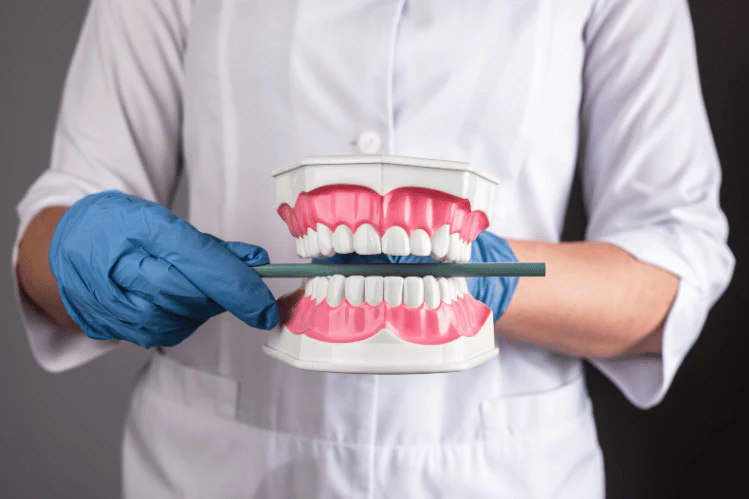A properly aligned jaw is essential for a healthy, functional smile. Misalignment can lead to issues such as uneven tooth wear, jaw pain, and difficulty chewing. Our experienced orthodontists specialize in correcting jaw alignment issues through cutting-edge treatments and personalized care. By utilizing advanced technologies and techniques, our orthodontic practice helps patients of all ages achieve optimal jaw alignment, enhancing not only their oral health but also their overall quality of life.
What is Jaw Alignment?
Jaw alignment, also known as occlusion, refers to the precise relationship between the upper and lower jaws, ensuring proper fit and function. It involves the harmonious positioning of the maxilla (upper jaw) and mandible (lower jaw) to facilitate optimal chewing, speaking, and breathing. Proper jaw alignment enables the teeth to come together correctly, distributing forces evenly throughout the facial structure.
What Are The Types of Jaw Alignment Issues?
There are several types of jaw alignment issues, including:
- Overbite: The upper jaw extends too far over the lower jaw.
- Underbite: The lower jaw extends too far forward.
- Crossbite: The upper and lower jaws are misaligned.
- Open Bite: The upper and lower teeth do not meet.
- Overjet: The upper teeth protrude too far forward.
What Causes Jaw Alignment Issues?
Jaw alignment issues can result from various factors, including:
- Genetics: Inherited traits.
- Trauma: Injury to the jaw or face.
- Dental Issues: Tooth loss, gum disease, or uneven tooth wear.
- Habits: Thumb sucking, tongue thrusting, or nail biting.
- Growth and Development: Abnormal jaw growth.
What Are The Symptoms of Jaw Alignment Issues?
Jaw alignment issues can manifest in various ways, including:
- Difficulty Chewing: Pain or discomfort while eating.
- Speech Problems: Difficulty articulating words.
- Jaw Pain: Clicking, popping, or tenderness.
- Headaches: Frequent or severe headaches.
- Facial Asymmetry: Uneven facial features.
What Are The Consequences of Untreated Jaw Alignment Issues?
If left untreated, jaw alignment issues can lead to:
- Tooth Wear: Uneven tooth wear and tear.
- Gum Disease: Increased risk of gum recession.
- TMJ Disorders: Temporomandibular joint pain and dysfunction.
- Sleep Apnea: Breathing difficulties during sleep.
- Self-Esteem Issues: Emotional distress due to appearance.
What Are The Treatment Options for Jaw Alignment Issues?
Treatment options for jaw alignment issues vary depending on the severity, type, and individual needs. Here are some common treatments:
Orthodontic Treatments
- Braces: Metal or ceramic brackets and wires to align teeth.
- Clear Aligners: Removable, invisible trays (e.g., Invisalign).
- Retainers: Customized appliances to maintain alignment.
Surgical Options
- Orthognathic Surgery: Corrects severe jaw misalignment.
- Maxillary Osteotomy: Repositions upper jaw.
- Mandibular Osteotomy: Repositions lower jaw.
Dental Restorations
- Crowns: Restores tooth shape and size.
- Bridges: Replaces missing teeth.
- Dental Implants: Replaces missing teeth.
Appliances and Devices
- Splints: Stabilizes jaw position.
- Mouthguards: Protects teeth from grinding.
- TMJ Splints: Relieves temporomandibular joint pain.
Non-Surgical Treatments
- Physical Therapy: Jaw exercises and stretches.
- Massage Therapy: Relaxes facial muscles.
- Acupuncture: Relieves pain and tension.

Childhood and Adolescent Treatments
- Growth Modification: Guides jaw growth.
- Interceptive Orthodontics: Early intervention.
Adult Treatments
- Orthodontic camouflage: Hides alignment issues.
- Dental Implants: Replaces missing teeth.
Can You Prevent Jaw Alignment Issues?
Yes, preventing jaw alignment issues is possible through a combination of good oral habits, lifestyle changes, and professional interventions.
Early Intervention
- Regular dental check-ups: Monitor growth and development.
- Orthodontic evaluation: Assess alignment by age 7.
Oral Habits
- Proper oral hygiene: Brush and floss regularly.
- Avoid thumb sucking: Break the habit by age 5.
- Correct tongue thrusting: Practice proper swallowing.
Lifestyle Changes
- Balanced diet: Eat nutrient-rich foods.
- Avoid hard or sticky foods: Reduce the risk of tooth damage.
- Manage stress: Relax facial muscles.
Protective Measures
- Mouthguards: Wear during sports or activities.
- Night guards: Protect against grinding and clenching.
Jaw alignment plays a critical role in maintaining overall oral health and preventing various dental and facial issues. Understanding the importance of proper jaw alignment and addressing issues promptly can prevent long-term consequences. Consult a dental professional to assess and address any jaw alignment concerns.

